A marketing funnel is a model that shows the way a potential customer goes from becoming aware of your brand to purchasing a good or service. This model involves several stages of customer engagement with a brand. Companies use marketing funnels to understand their customers' needs in each stage, optimize their marketing efforts, and generate more sales.
Building a marketing strategy without a funnel is like taking a shot in the dark. Read on to learn how businesses benefit from building marketing funnels.
Why are marketing funnels important?
You cannot downplay the importance of using a marketing funnel. In the end, it can change the game for your business. Here are several ways a marketing funnel can assist you in:
- Picking a marketing strategy. The cornerstone of a marketing funnel is your customer journey. Knowing the latter allows you to understand when and why prospects drop off before making a purchase, and what tools and strategies you can use to keep them engaged with your brand.
- Staying consistent with your promotion. With a marketing funnel, you don't have to puzzle over your next step to attract and retain customers. Create a plan of marketing activities for each stage of the funnel and interact with leads to drive them towards making a purchase.
- Increasing your sales. Without a funnel, you lose money if a potential customer doesn't buy from you immediately. They just drop off and forget about your offer. If you have a marketing funnel, you can nurture leads until they're ready to purchase.
- Making it easier to close the deals. In B2B, closing deals requires combined efforts of the marketing and sales teams. Marketing funnels provide your salespeople with detailed insights into leads' behavior, which gives them more hints on how to close the deal.
- Saving time and effort. Knowing your customer journey and having a plan of activities for each stage allows you to automate your marketing efforts. It saves tons of time and helps you achieve better results.
- Predicting future sales. Marketing funnels enable you to understand the results of your marketing activities better. Knowing a lead conversion for each stage, you can predict how many of your leads will eventually turn into paying customers.
- Retaining customers. A plan of post-purchase marketing activities helps you keep customers engaged and make them return now and then. Retaining customers is five times cheaper than acquiring new ones.
We've unpacked a few reasons why every business needs a marketing funnel. Now let's discuss what stages it includes.
Marketing Funnel Stages
The number of stages in a marketing funnel depends on your approach and, mostly, your customers' behavior. Some keep it simple and divide the funnel into the top, middle, and bottom stages.
The most relevant for today's world marketing funnel includes the following stages.
- Awareness. A future customer gets to know your business.
- Interest. Leads gain more knowledge about your company and its products.
- Consideration. Leads turn into prospects; they show more activity by learning about your product or service.
- Intent. Prospective customers demonstrate their interest in purchasing from you.
- Evaluation. Here buyers make a final decision about whether to buy from you or not.
- Purchase. The final part, where a prospect makes the decision and becomes your customer.
Some marketers add two more stages – loyalty and advocacy. The first includes actions on turning a single-time customer into a regular one; the second entails your customer becoming a brand advocate. These stages can be merged and called post-purchase behavior.
Working with post-purchase stages is especially important in the B2B sector, where the number of potential customers is limited, and the purchasing process is more lengthy and complicated. To learn more about the peculiarities of marketing funnels in B2B and B2C, read further.
What is the difference between B2B and B2C marketing funnels?
B2B and B2C customers go through more or less the same stages of a marketing funnel. However, there are some differences in this process.
In B2C, customers make purchasing decisions alone. Thus, the business-to-consumer model entails a short buying cycle, limited to hours or days. On average, individuals do less product research than businesses; they often buy impulsively. Typically, no salespeople are needed because marketing teams drive the whole process.
B2B implies a lot of decision-makers – departments or whole companies, so making a purchase in B2B often takes weeks or months. The decision-making process is based on rational thinking; thus, you have to use tactics different from B2C.
Operating on niche markets, B2B businesses have to focus on identifying their buyer persona and building stronger relationships with them. To close deals, marketing and sales teams often join their efforts in the funnel's lower stages.
Now you know the differences between B2B and B2C marketing funnels. Eager to build your own? Let's dive into creating a marketing funnel.
How to Create a Marketing Funnel
- Get to know your audience
- Learn your buyer's journey
- Determine the number of stages
- Spot the most effective marketing tactics
- Use a CRM system
- Keep track of changes
With an abundant variety of approaches for developing marketing funnels, building your own can feel overwhelming. Consider the following steps to get the ball rolling:
- Get to know your audience. There is no way to create a marketing funnel without knowing your customers' pains and interests. To determine them, follow our tips on creating a customer persona. For even more useful insights, research your competitors' customers – you're likely to have a lot in common. Also, pay attention to feedback from your existing customers, surveys, social media, and web analytics data.
- Learn your buyer's journey. Besides learning who your customers are, try to understand how they interact with your website and other resources. What channels do they prefer? What barriers stand in their way to purchase? What doubts and problems do they have during the buying process? Answering all of these questions will help you find the best places to start your funnel and ways to push your customers through it.
- Determine the number of stages. Your customers do not necessarily go through all the stages of a modern marketing funnel. For instance, you may or may not include post-purchase stages, or instead of defining six steps, just go for the top, middle, and bottom parts of the funnel. The exact model depends on your buyers' behavior.
- Spot the most effective marketing tactics. This move will help you turn a marketing funnel into a practical instrument. Think of the tactics and channels you want to use and the types of content to attach to each stage. For instance, you may attract leads with blog posts or PPC ads, nurture them with email marketing, and make them purchase your product through case studies or events. Check out our compilation of eCommerce marketing types and strategies to learn more about your options in various stages of the marketing funnel.
- Use a CRM system. It helps companies manage their relationships with clients. The SendPulse CRM system allows marketers to record each deal to see how fast they move, keep information about each client, assign sales reps responsible for every deal, communicate with clients via email or chatbot in one place. The service is free, so register and put your sales process on autopilot.
- Keep track of changes. You cannot just craft a marketing funnel and call it a day. To make this tool effective, remember to test new marketing tactics and content formats. Keep track of your results, and look for changes in your customers' behavior.
Having a hard time thinking of how to put your marketing funnel creation into practice? We've picked some more precise tips on building funnels for B2B and B2C sectors.
How to Build a B2B Marketing Funnel
Defining a buyer persona and pinpointing your audience's pains is crucial for B2B. The problem is your potential customers may not even know they have a problem. At the top of the funnel, your task is to help them realize it rather than offering a solution immediately. The content formats suitable for this stage are blog posts, downloadable offers, whitepapers, PPC ads, videos, and social media campaigns.
To push your prospects to the middle of the funnel, show them why your product or service is the best solution they can get. Consider using case studies, guides, webinars, email campaigns, retargeting ads, podcasts, checklists, and more to drive this point home.
Only a small portion of your prospects will make their way to the bottom of a funnel. Your mission here is to help them decide to buy from you. Use free trials, live demos, consultations with salespeople, training, testimonials, and discounts to encourage them to make the purchase.
In B2B, you have to include the post-purchase stages into your funnel. Keep your customers engaged using digital marketing, social media, and personal interactions. It will help you increase customer lifetime value.
How to Build a B2C Marketing Funnel
As B2C customers often base their decisions on emotions, you need to make them excited about your brand. Viral social media posts, PR publications, guerrilla marketing, and media interviews will help you grab the audience in the funnel's top stages.
To help customers make their way through the middle stages, educate them about your product and make an appealing offer. Consider using performance marketing, SEO, online reviews, gifts, and remarketing campaigns.
In the lower stages, choose email campaigns and web push notifications with exclusive offers, promo codes, and more. Register with SendPulse to create amazing campaigns in two clicks and send them automatically.
To retain customers, continue communicating with them even after a purchase. You can offer them contests, ask them to fill in surveys, or engage through social media.
Need a dose of inspiration for creating your marketing funnels? Read further and check out some examples we've picked for you.
Marketing Funnel Examples
Let's learn a bit more about the tactics brands use to attract potential customers and drive them towards a marketing funnel.
NYX
The beauty brand, NYX, shows an A+ example of a marketing funnel that starts on social media. Once a potential customer visits the brand's page on Pinterest, the journey begins.
Part of the page's content implies advertising products. In the example below, it's an appealing image with a brief description of the product. The post contains several links to the NYX website, moving the customer down to the interest and consideration stages.
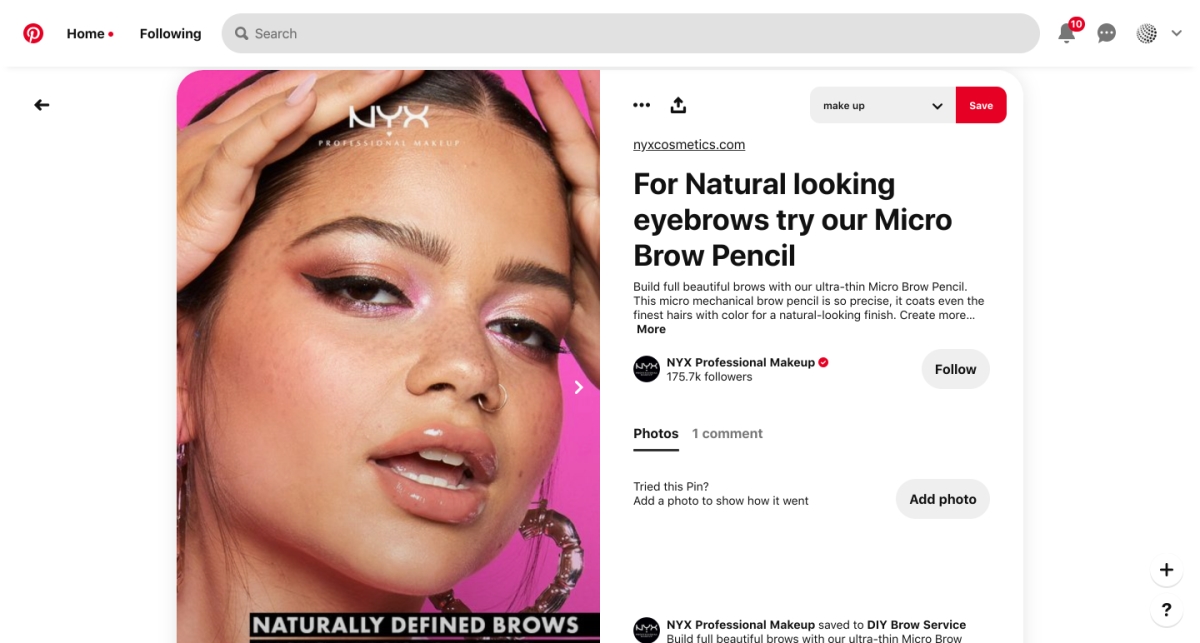
Once clicking on the promotional post, a potential customer goes to a special section of the NYX website, dedicated to brow products. Here they can choose between several options, which meet their needs. Now they are in the evaluation stage.
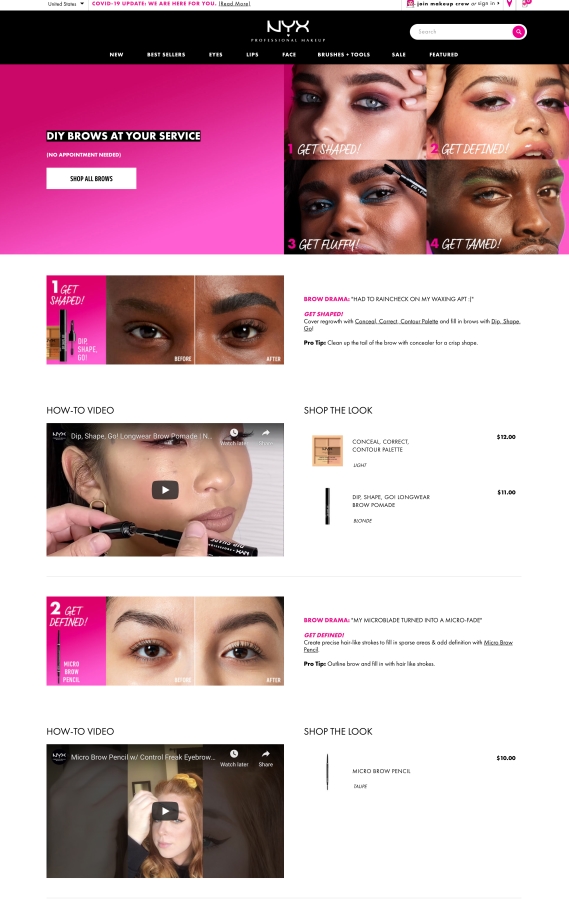
In the final stage, a customer can purchase the product in two clicks. It may be considered the end of the funnel.

Snaptravel
The booking service, Snaptravel, uses a Facebook chatbot to drive a customer through their funnel in several minutes. Starting with a potential customer discovering Snaptravel on Facebook, the service offers to interact with its bot straight away.
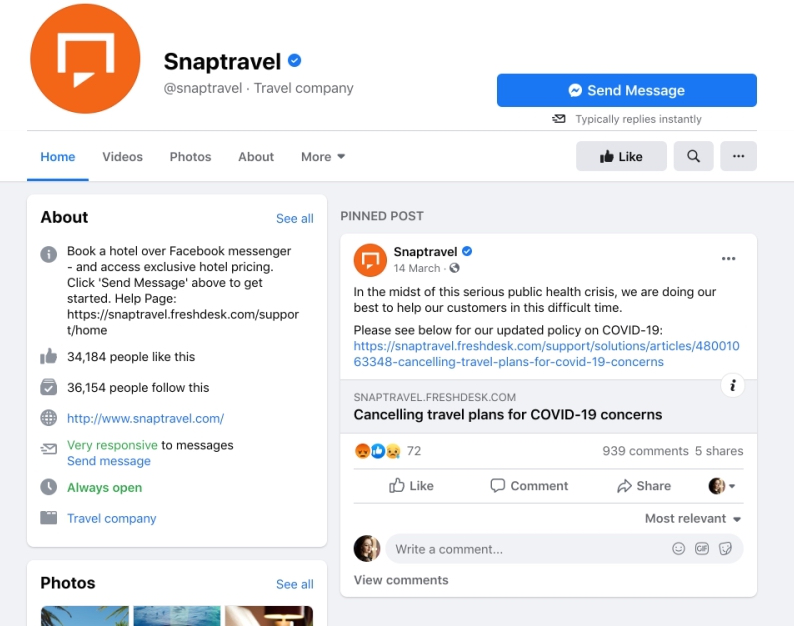
In their conversation with the chatbot, Snaptravel briefly educates visitors about the service and offers to help them find cheap hotels for specific dates and destinations. This move helps to push a potential customer through the middle of the funnel.
Eventually, the service invites a user to look through the whole list of suitable hotels on its website. A potential customer can go there and book the most appealing option.
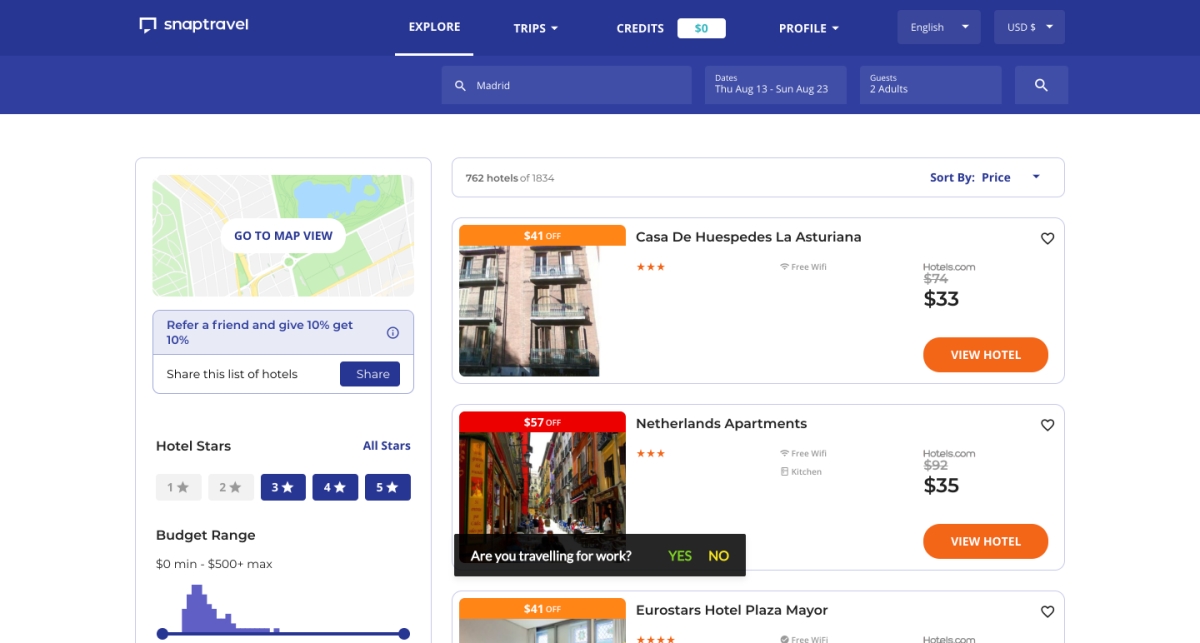
To incorporate chatbots into your marketing strategy and draw leads down the funnel faster, try SendPulse. Create a bot for Facebook or Telegram and send up to 10,000 messages a month to an unlimited number of subscribers for free.
Wix
The website creator, Wix, built a marketing funnel to drive new users to its website and keep them engaged with the service. The purpose is to make potential customers sign up rather than buy a premium subscription.
To make potential customers aware of the brand, Wix uses SEO. The company's article appears in the Google featured snippet for the query "how to create a landing page." After clicking on it, Google redirects the potential customer to the Wix blog.
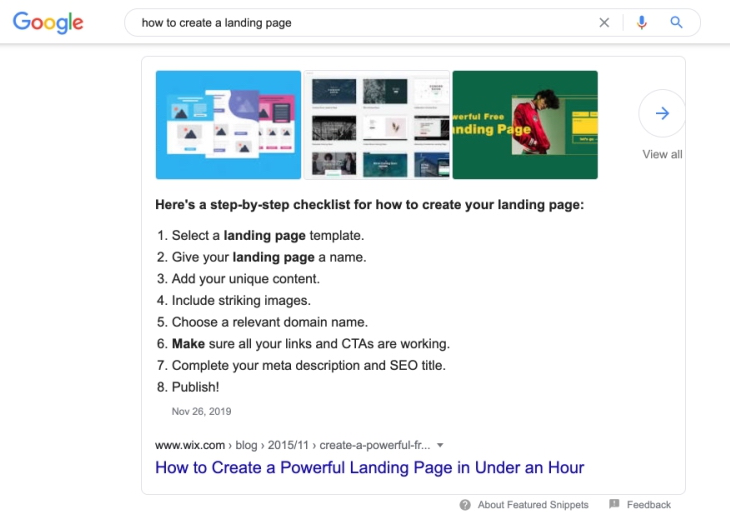
To push a new visitor down the marketing funnel, Wix offers them to start building their website straightaway. After clicking the "Start now" button, a potential customer goes to the Wix editor. Once a visitor registers with a service, Wix achieves its primary goal.
Bannersnack
The online ad builder, Bannersnack, attracts potential customers with Facebook PPC ads. The service provokes interest and tells potential customers about its benefits with a show-stopping video advertisement.
After clicking on the post, the customer goes to the consideration stage. They meet the company's landing page and a proposal to use an advertisement constructor. Here a customer signs up with the service, but their journey isn't over yet.
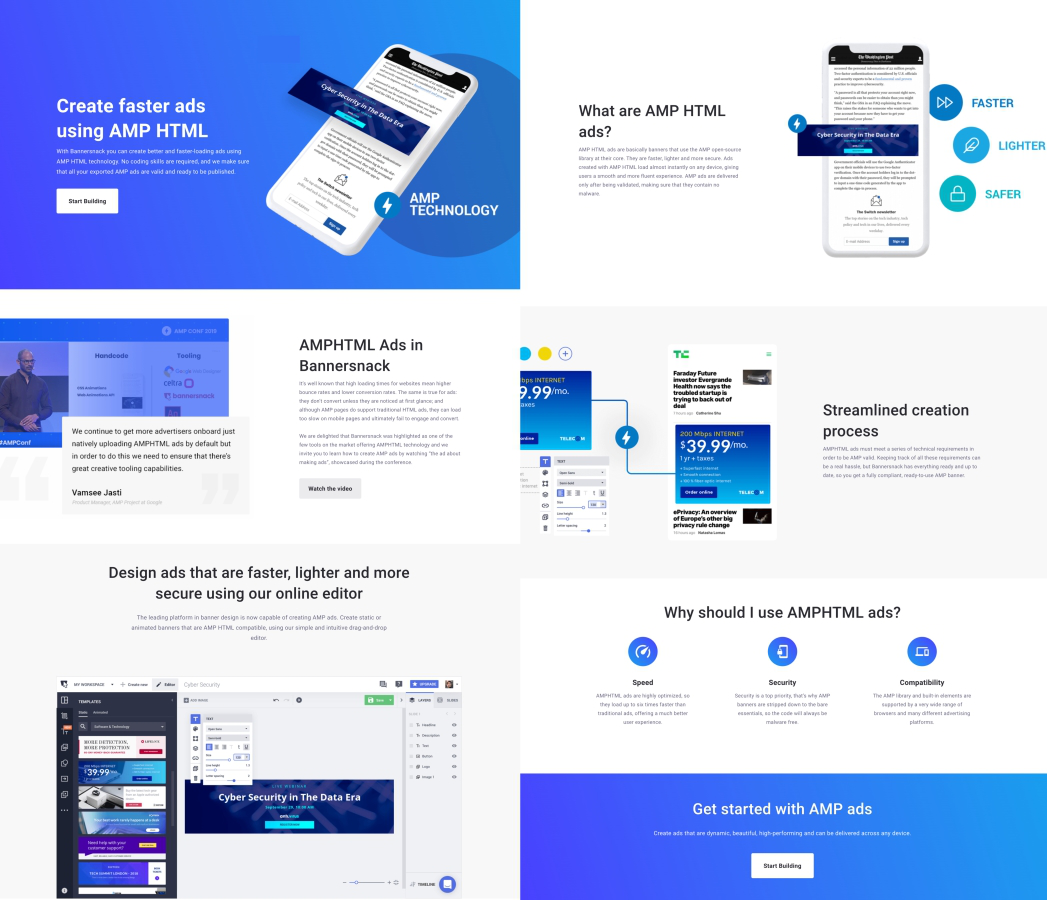
In contrast to Wix, Bannersnack's goal is to sell a premium subscription. So, in the member's area, the service offers access to more advanced features and redirects a user to the pricing page.
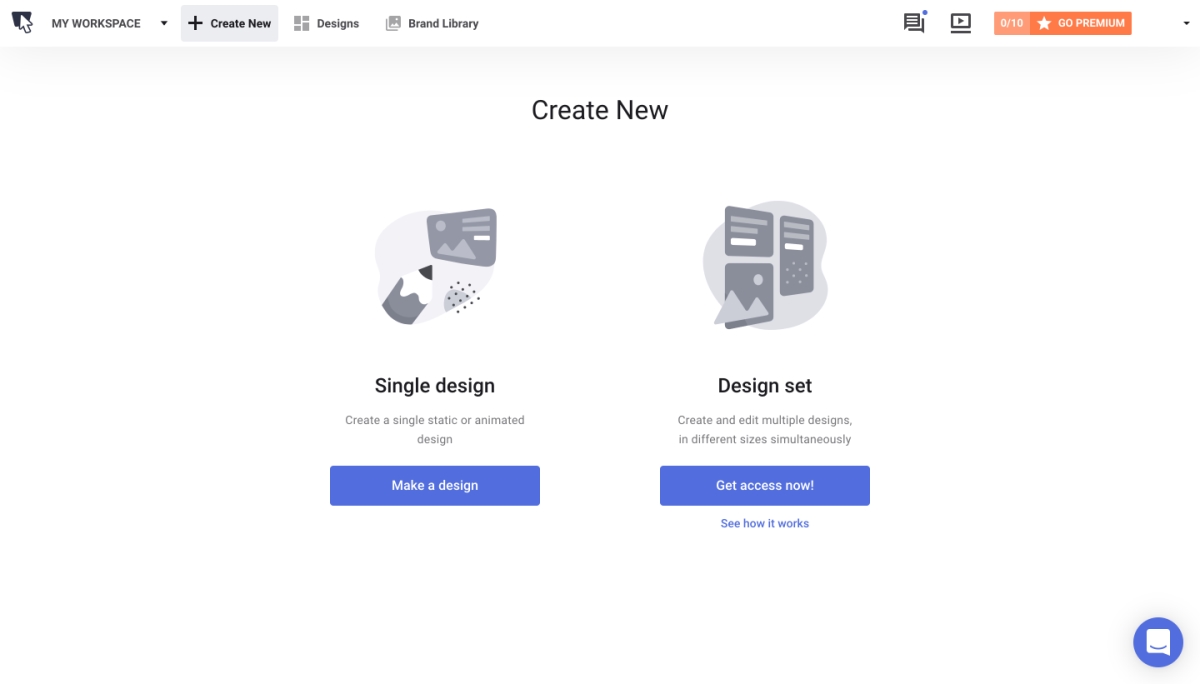
To reinforce the message about the premium subscription benefits, Bannersnack adds email marketing. The company sends new members a welcome email offering to try paid features.
Now you've learned how to build marketing funnels. To save time and money on maintaining them and automate your marketing activities. Register with SendPulse, set up email and web push campaigns, create chatbots, and send SMS to drive your potential customers from the awareness stage to the purchase stage with zero effort.
Last Updated: 22.03.2023

or